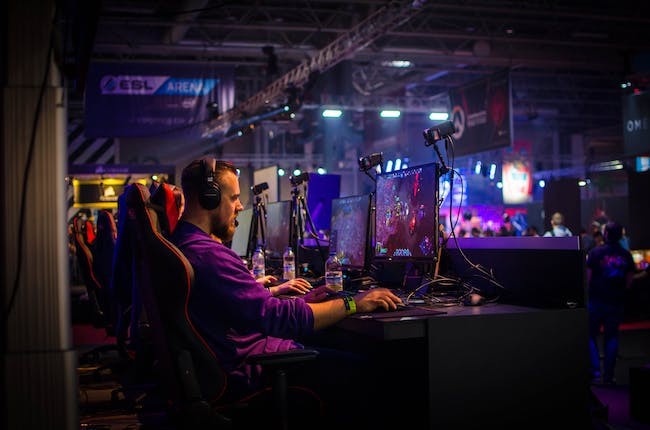As we look ahead to the future of edge computing, there are many use cases that are driving demand. However, one area that we are especially interested in is online gaming, where we believe that our platform has the opportunity to provide transformative value for game developers.
Due to the increasing computational requirements of esports and other online games, video game developers are launching larger and larger cloud infrastructures purely devoted to collecting in-game player data. Game performance depends on how quickly this data can be fetched, processed, and acted upon by their servers. As in-game data gets more complex, this process gets slower and latency increases.
Recently, the game industry has started to explore edge computing as a solution to this problem. Where traditional architectures send enormous amounts of data to a few centralized locations for processing, distributed architectures are able to process more data at the edge and only send aggregated or anomalous data back to those few centralized locations. When workloads run at the edge, data travels the minimum possible distance and players have a latency-free experience. By running data workloads at the edge, gamers get a better in-game experience, and the company managing the game is able to significantly reduce costs associated with running the centralized infrastructure.
Mobile Gaming Is Driving the Need for Change
Video games are increasingly going mobile. According to SuperData Research, over $59 billion was spent on mobile games in 2017 in comparison to $8.3 billion on traditional gaming consoles. Demand for mobile gaming that is immersive and interactive is starting to push the physical limitations of today’s slim designs and the networks and infrastructure of traditional cloud computing. Edge computing is helping to solve this problem, fueled in telecom by the move towards 5G.
Edge computing could make it possible to hold a high-end console in your hand, reducing the battery strain on mobile devices while still offering a high-end user experience. Not to mention, access to a 5G connection through geographic proximity will lead to lower latency for all games and an overall improved mobile gaming experience.
In early 2018, AT&T ran a demo at the E3 gaming convention in LA, showing what 5G and edge computing could mean for gamers. Using three fixed base stations within the conference venue, along with up to 3 user equipment (UE) units placed in close proximity to the base station receivers, the 28 GHz demo showed how 5G and edge computing are enabling immersive experiences outside the home.
Low Latency Is Critical for the Gamer Experience
Online games involve continual interactivity and near-immediate feedback, which requires low latency. The game has to respond to the gamer’s commands, which must travel back-and-forth over the network to be processed by datacenters fast enough so the gamer feels the game is responding to each keystroke and mouse movement in real time. This sense of real-time immersion is what makes a game engaging.
Thus the big challenge of streaming a game from the cloud is latency. Even a few milliseconds delay in how quickly a game responds to your mouse click results in frustration for the gamer. If the data center is located too far away or network connections are weak, the user experience will suffer and consequently use may drop off.
This is why edge computing is being touted as the future for gaming. The easiest way to ensure latency is at its lowest is to place the data processing as close as possible to the gamer.
Example: Pokémon Go
As games move towards augmented reality and virtual reality (AR/VR) mobile gaming, the need for edge computing also increases. Pokémon Go was the first viral AR hit. The game, developed by Niantic for iOS and Android, lets players capture, battle and train virtual Pokémon that appear in the real world. Pokemon Go is mobile exclusive because it relies on each user’s real-time GPS and clock data to bring the user into contact with virtual Pokémon.
It’s likely that as Pokémon Go develops, it will need to increase in complexity in order to keep users engaged. Features such as real-time interactions between players will require even lower latency. Simultaneously, it is highly probable given Pokémon’s popularity, other developers will follow suit, bringing more mobile, location-based AR games to market.
As these games become more popular and offer greater interactivity and sophistication, latency and edge compute will be crucial.













